IELTS Writing Task 2 dạng Agree or Disagree Part 5
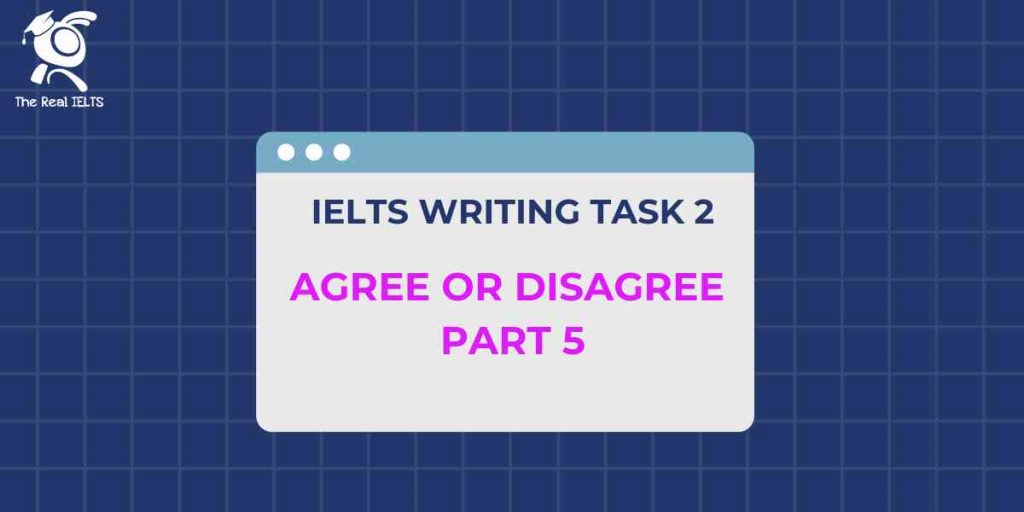

Đề bài IELTS Writing Task 2 dạng Agree or Disagree Part 5
Cách làm IELTS Writing Task 1 PIE Chart


IELTS Writing Task 1 PIE chart là vẫn là dạng 1 của IELTS Writing nhưng mà là dạng biểu đồ tròn. Và vì là dạng biểu đồ tròn Pie Chart thì cách làm sẽ khác hẳn với dạng Line Chart và Bar Chart.
IELTS Writing Task 1 Bar Chart: Volunteer Activities
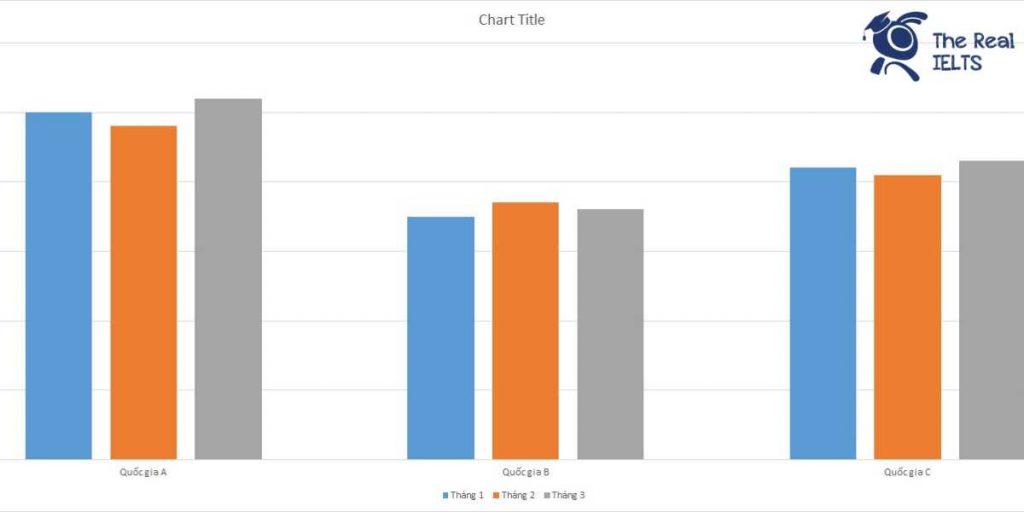

IELTS Writing Task 1 Bar Chart: Biểu đồ cột mô tả số lượng người tham gia hoạt động tình nguyện trong ba tháng ở ba quốc gia khác nhau.
IELTS Writing Task 1 Bar Chart: Service Calls
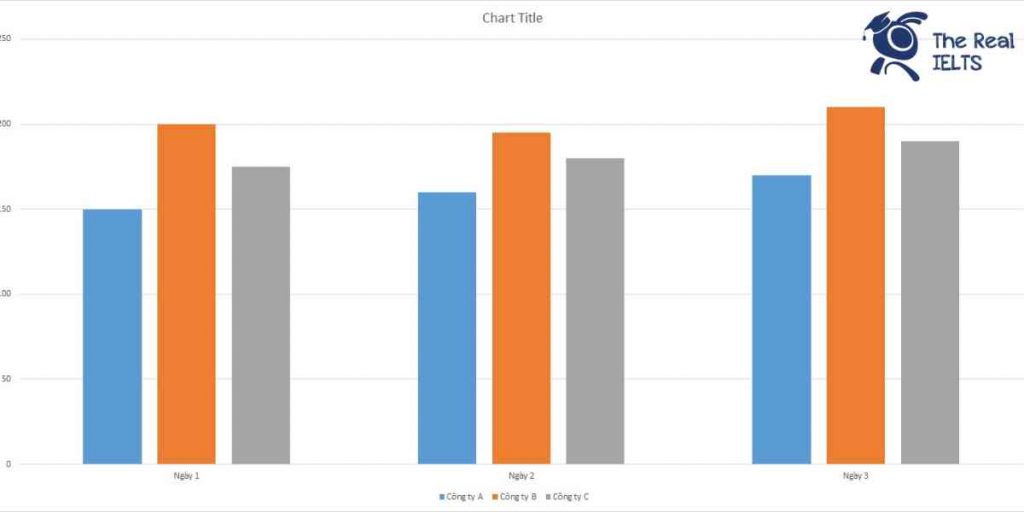

IELTS Writing Task 1 Bar Chart: Service Calls. Biểu đồ cột (Bar Chart) mô tả số lượng cuộc gọi chăm sóc khách hàng của ba công ty trong ba ngày.
IELTS Writing Task 1 Bar Chart: Voter Turnout
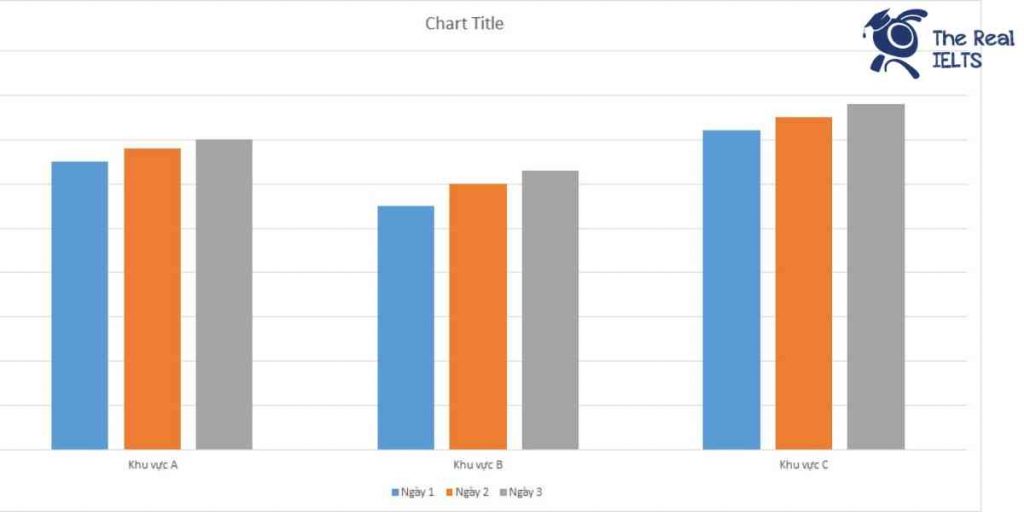

IELTS Writing Task 1 yêu cầu thí sinh phân tích biểu đồ Bar Chart về tỷ lệ người dân tham gia bầu cử trong ba ngày tại ba khu vực khác nhau.
IELTS Writing Task 2 dạng Agree or Disagree Part 4
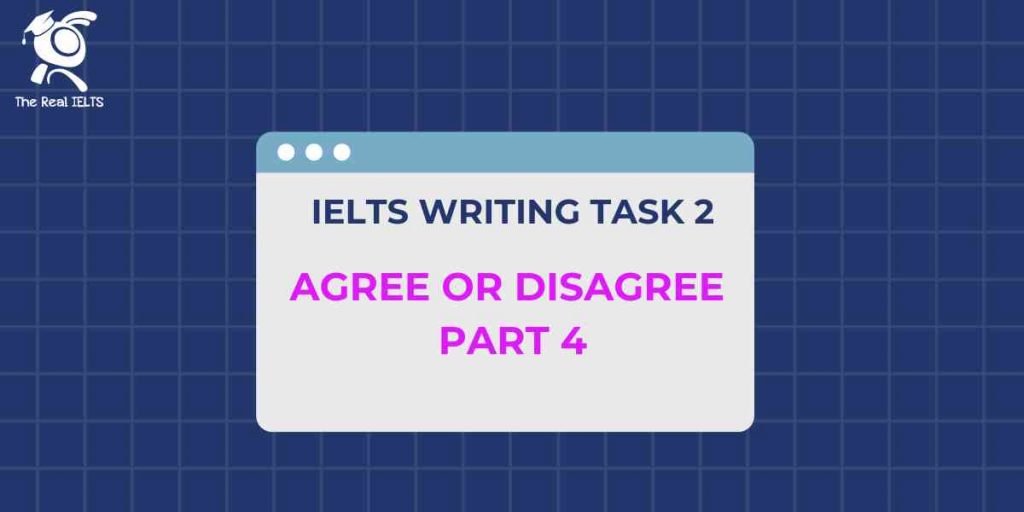

Đề bài IELTS Writing Task 2 dạng Agree or Disagree Part 4
IELTS Writing Task 1 Bar Chart: Graduates
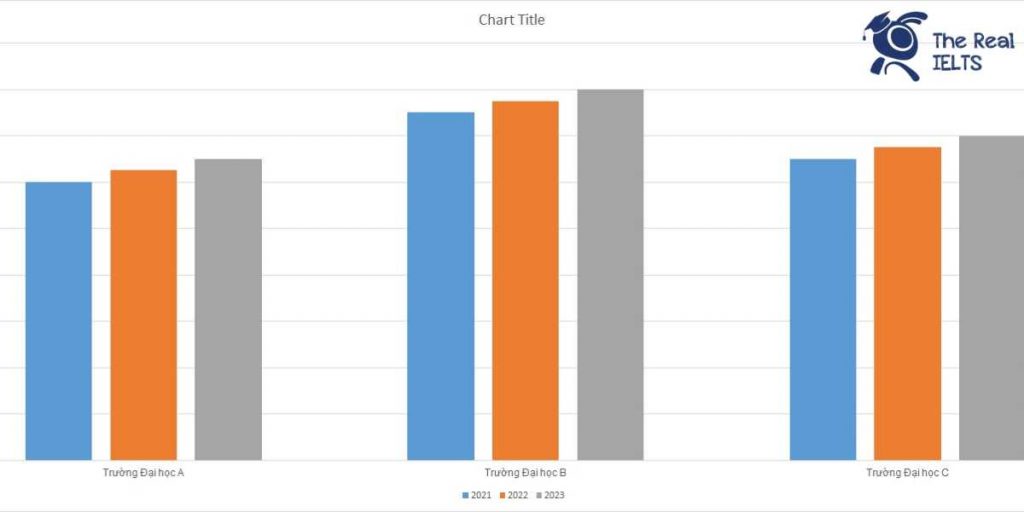

IELTS Writing Task 1 yêu cầu bạn phân tích số lượng sinh viên tốt nghiệp trong ba năm từ ba trường đại học, thể hiện qua biểu đồ cột.
IELTS Writing Task 2 dạng Agree or Disagree Part 9
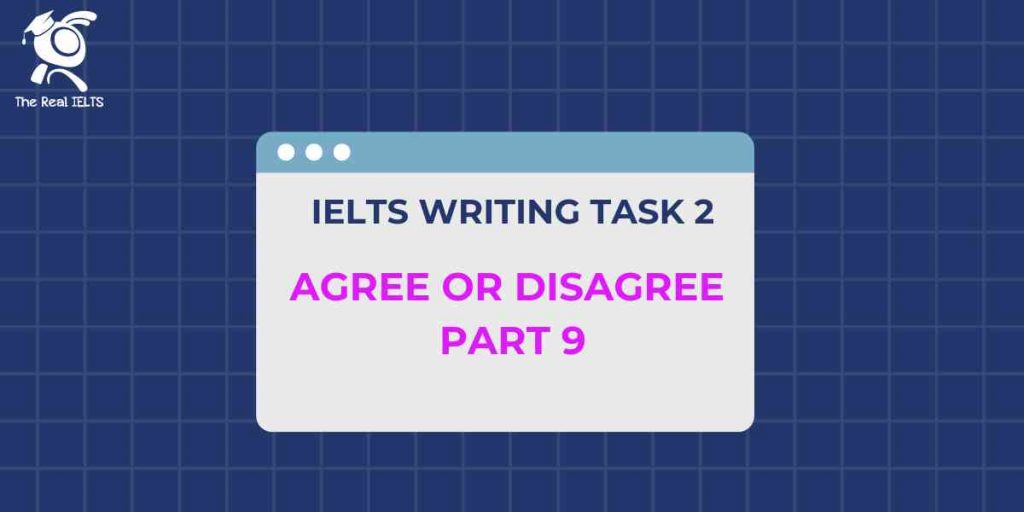

Đề bài IELTS Writing Task 2 dạng Agree or Disagree Part 9
IELTS Writing Task 1 Bar Chart: Using Smartphones
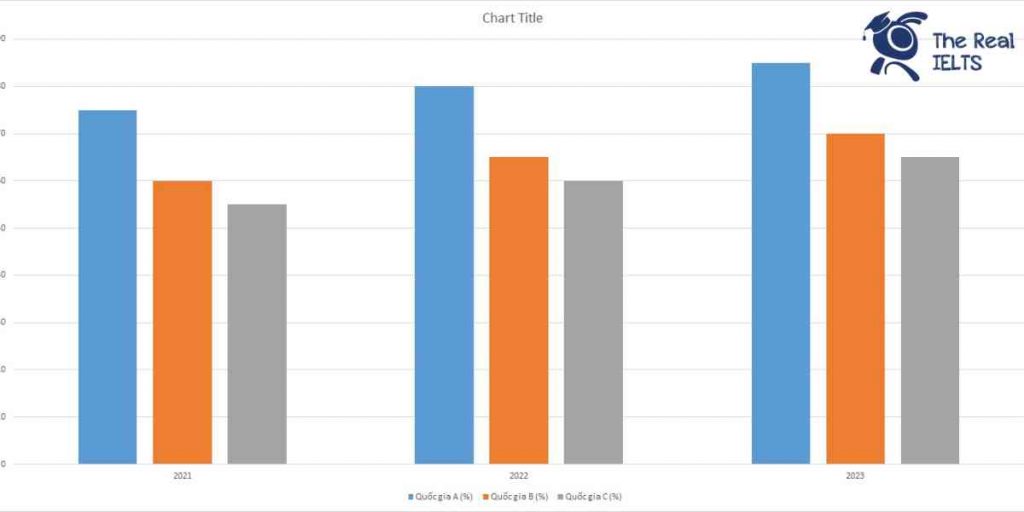

IELTS Writing Task 1 yêu cầu thí sinh mô tả biểu đồ thanh (bar chart) minh họa tỷ lệ người dân sử dụng điện thoại thông minh trong 3 năm ở ba quốc gia. Bài viết nên tập trung vào so sánh số liệu giữa các năm và các quốc gia, chỉ ra xu hướng tăng giảm rõ rệt và nhấn mạnh các điểm đáng chú ý nhất trong biểu đồ để cung cấp cái nhìn tổng quan và chi tiết. Đọc bài này Cách làm bài IELTS Writing Task 1 Bar Chart trước khi làm bài. Bạn cũng có thể đọc lại bài nói về Task 1 tại đây: IELTS Writing Task 1 cần lưu ý những gì? Đọc thêm về xây dựng lộ trình học IELTS của The Real IELTS. IELTS Writing Task 1 Bar Chart: Using Smartphones You should spent about 20 mintutes on this task IELTS Writing Task 1 requires candidates to describe a bar chart illustrating the percentage of people using smartphones over three years in three countries. The essay should focus on comparing the data between years and countries, highlighting significant increasing or decreasing trends, and emphasizing the most notable points in the chart to provide a comprehensive and detailed overview. You should write at least 150 words. Năm Quốc gia A (%) Quốc gia B (%) Quốc gia C (%) 2021 75 60 55 2022 80 65 60 2023 85 70 65 Bài mẫu 1 Overview The use of smartphones has seen a steady increase over the past three years in three countries: Country A, Country B, and Country C. The data, covering the years 2021 to 2023, highlights the growing penetration of smartphones in these regions, showcasing the technological adoption and connectivity improvements among their populations. Body 1 In 2021, the percentage of people using smartphones was 75% in Country A, 60% in Country B, and 55% in Country C. This initial data set reveals that Country A was leading in smartphone adoption, with a significant 15% higher usage rate compared to Country B and a 20% higher rate than Country C. These figures suggest that Country A was more technologically advanced or had better access to smartphone technology and infrastructure at the time. Body 2 The trend continued positively in the following years. By 2022, the smartphone usage rates had increased to 80% in Country A, 65% in Country B, and 60% in Country C. This growth indicates a consistent rise in smartphone adoption, with each country showing a 5% increase from the previous year. By 2023, the usage rates further escalated to 85% in Country A, 70% in Country B, and 65% in Country C. This data not only confirms the ongoing trend of increasing smartphone penetration but also highlights the narrowing gap between these countries in terms of smartphone usage. Country A continues to lead, but the other countries are catching up steadily, reflecting overall improvements in technological access and affordability. Bài mẫu 2 Overview The following analysis examines the smartphone usage rates in three countries—Country A, Country B, and Country C—over a period of three years: 2021, 2022, and 2023. The data indicates a consistent increase in smartphone adoption across all three nations, with each showing a positive trend in usage rates during the specified timeframe. Body 1 In 2021, the initial year of the study, Country A had the highest smartphone usage rate at 75%. This was followed by Country B at 60%, and Country C at 55%. This distribution shows that while all three countries had significant smartphone penetration, Country A was notably ahead in terms of adoption. Moving to 2022, the smartphone usage rates increased in all three countries. Country A’s rate rose to 80%, maintaining its leading position. Country B saw an increase to 65%, while Country C’s rate went up to 60%. The consistent growth in each country suggests a widespread and increasing dependence on smartphone technology. Body 2 By 2023, the upward trend continued. Country A reached an impressive 85% in smartphone usage, reflecting a significant adoption rate among its population. Country B followed with 70%, showing steady growth. Country C also demonstrated continued progress, achieving a 65% usage rate. Overall, the data reveals a clear pattern of increasing smartphone use across these three countries over the three years. Country A consistently led in smartphone penetration, while Countries B and C also experienced substantial growth, albeit at a slightly slower pace. This trend indicates a global move towards greater connectivity and technological integration in daily life.
IELTS Writing Task 1 Bar Chart: Insurance Costs
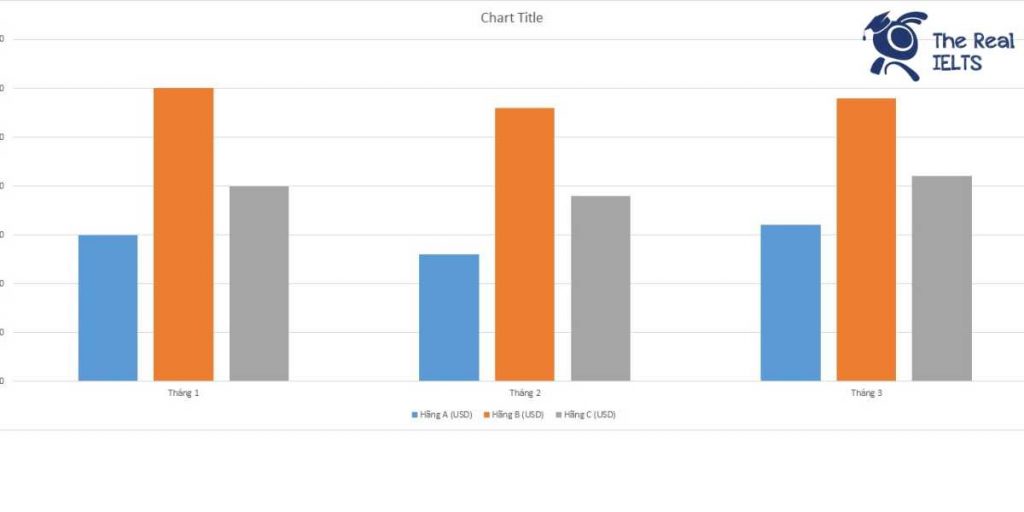

Bài viết IELTS Writing Task 1 yêu cầu bạn phân tích biểu đồ cột (Bar Chart) về chi phí bảo hiểm trong 3 tháng của 3 hãng ô tô khác nhau. Bạn sẽ cần mô tả sự khác biệt về chi phí giữa các hãng, xu hướng thay đổi theo thời gian và so sánh chúng để làm nổi bật những điểm chính và thông tin quan trọng. Đọc bài này Cách làm bài IELTS Writing Task 1 Bar Chart trước khi làm bài. Bạn cũng có thể đọc lại bài nói về Task 1 tại đây: IELTS Writing Task 1 cần lưu ý những gì? Đọc thêm về xây dựng lộ trình học IELTS của The Real IELTS. IELTS Writing Task 1 Bar Chart: Insurance Costs You should spent about 20 mintutes on this task In IELTS Writing Task 1, you are required to analyze a bar chart depicting insurance costs over three months for three different car brands. You will need to describe the differences in costs between the brands, observe trends over time, and compare them to highlight key points and important information. You should write at least 150 words. Tháng Hãng A (USD) Hãng B (USD) Hãng C (USD) Tháng 1 1,200 1,350 1,250 Tháng 2 1,180 1,330 1,240 Tháng 3 1,210 1,340 1,260 IELTS Writing 1 Overview The table presents a hypothetical comparison of insurance costs for three different car companies (A, B, and C) over a span of three months. The insurance costs are listed in US dollars for January, February, and March. Body 1: Cost Analysis for Each Company In January, Company A’s insurance cost is $1,200, Company B’s is $1,350, and Company C’s is $1,250. In February, the costs slightly decrease for all companies, with Company A at $1,180, Company B at $1,330, and Company C at $1,240. However, in March, the costs increase again: Company A rises to $1,210, Company B to $1,340, and Company C to $1,260. Overall, Company A consistently has the lowest insurance costs, while Company B has the highest across all three months. Body 2: Monthly Trends and Comparisons Examining the monthly trends, we notice that Company A shows a slight decrease from January to February, followed by a small increase in March. Similarly, Company B and Company C also experience a decrease in February and a subsequent increase in March. This trend suggests a general pattern of minor fluctuations in insurance costs across the three companies. Despite these fluctuations, the cost differences between the companies remain relatively consistent, with Company B always having the highest insurance costs and Company A maintaining the lowest, making it the most cost-effective option overall. IELTS Writing 2 Overview This analysis examines the insurance costs of three different car companies, A, B, and C, over a three-month period. The data provides insight into the trends and variations in insurance expenses, which can help consumers make informed decisions about their car insurance providers. By comparing the costs for January, February, and March, we can identify which company offers the most consistent and affordable rates. Body 1 In January, Company A had an insurance cost of $1,200, which was the lowest among the three companies. Company B had the highest cost at $1,350, while Company C was in the middle with $1,250. This initial month shows that Company A is the most economical choice, followed by Company C and then Company B. The difference between the highest and lowest costs in January is $150, highlighting a significant variation in pricing. Body 2 Moving to February, the insurance costs slightly decreased for all three companies. Company A’s cost dropped to $1,180, Company B’s to $1,330, and Company C’s to $1,240. Despite these reductions, the ranking remained the same: Company A offered the lowest cost, followed by Company C, and Company B remained the most expensive. In March, costs for Companies A and B increased to $1,210 and $1,340, respectively, while Company C’s cost rose to $1,260. Over the three months, Company A consistently had the lowest insurance costs, indicating it as the most cost-effective option.
IELTS Writing Task 1 Bar Chart: Life Insurance
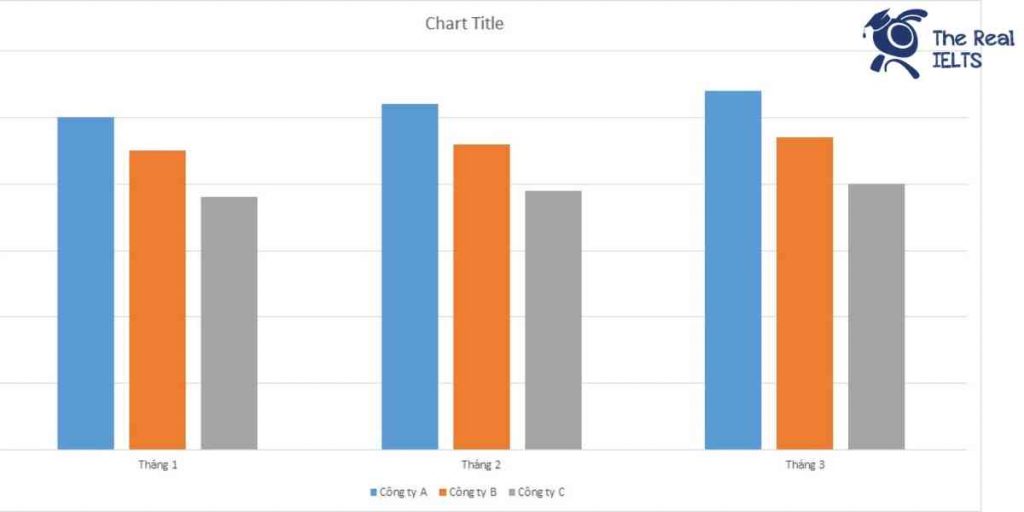

IELTS Writing Task 1 yêu cầu thí sinh mô tả biểu đồ cột về số lượng người tham gia bảo hiểm nhân thọ trong ba tháng tại ba công ty bảo hiểm nhân thọ khác nhau.
IELTS Writing Task 2 dạng Agree or Disagree Part 3
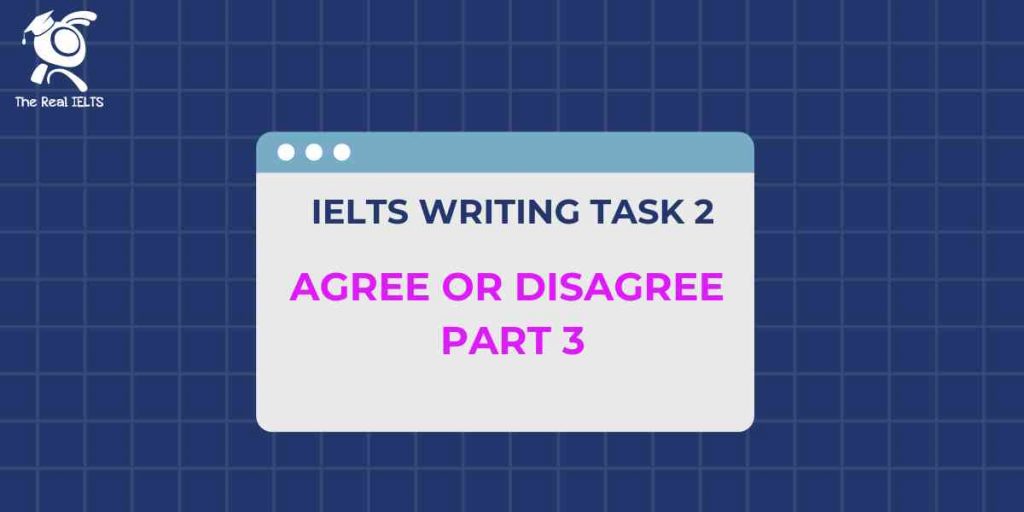

Đề bài IELTS Writing Task 2 dạng Agree or Disagree Part 3





